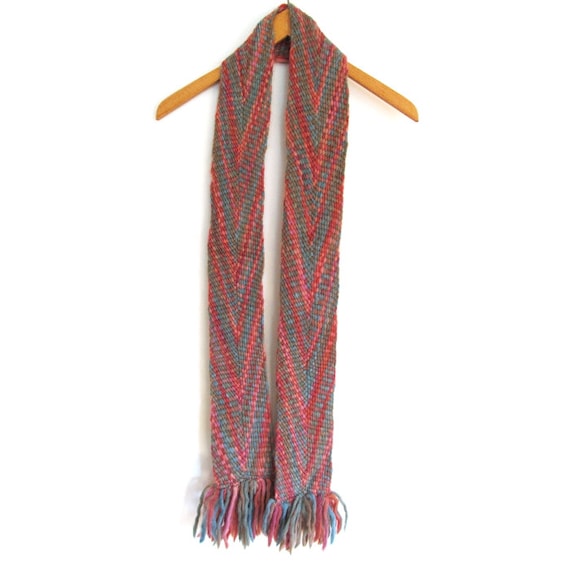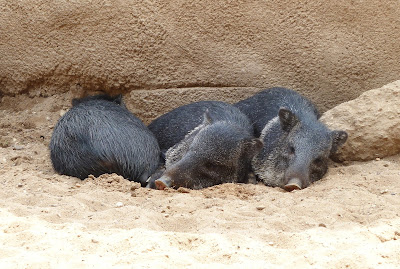 |
| Simple chevron pattern scarf. Etsy |
So what is fingerweaving? It is basically a technique for weaving without a loom. The strands of yarn are anchored at one end, and then each strand is cycled through the pattern as both warp (lengthwise threads) and weft (horizontal thread that is inserted over and under the warp). You can see a video demonstration here.
 |
| Beaded arrowhead belt. |
This technique is associated with the Métis of the Northern Plains. Métis are the descendants of early European fur trappers and native women. Their culture is a blend of traditions and skills from both aspects of their heritage.
 |
| Flame sash. |
Their fingerwoven sashes (also known by the French voyageurs as ceinture fléchée) had many practical uses. A wide sash wrapped around the waist functioned as a weight belt. Fold that sash in half lengthwise, and you had a pocket to carry things you needed easy access to, or hang a pouch on it to hold your pipe. The wool fibers kept the cold from creeping up under your shirt. Different colors and patterns could represent your company or group.
 |
| Diamond with vertical border purse. |
My own examples are quite simple in comparison to the intricate work historically made by native artisans. It can take me from a week to a month to complete a project; some of the most intricate and beautiful Métis sashes represent several years of work.
 |
| Double lightning with glass beads. |
Further Reading:
Virtual Museum of Métis History and Culture
Moon River Métis Council
Fingerweaving Untangled (Carol James)



























